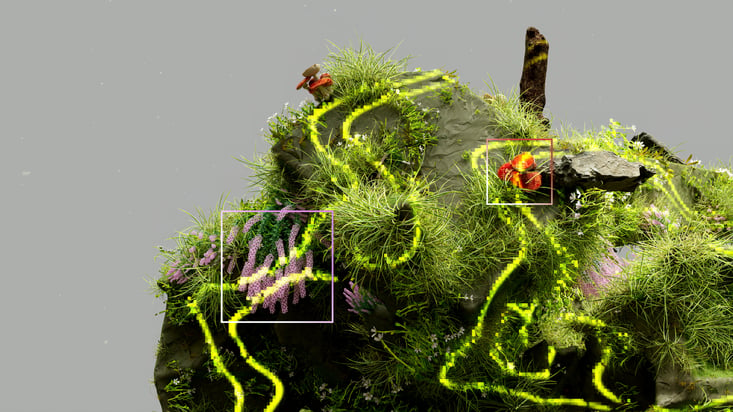
Artificial intelligence continues to evolve at breakneck speed, revolutionizing entire sectors and redefining what we thought possible in technology. In September 2024, several new trends are emerging or gaining prominence, shaping the future of AI for businesses, researchers, and consumers. Here's a look at the AI trends to watch this month, covering diverse areas from robotics to machine-generated creativity.
1. Multimodal AI takes control
A key trend at the moment is the rise of multimodal AI models. These systems are capable of processing and combining different types of data - text, images, audio and video - for a more complete understanding of the world. For example, systems such as GPT-4 or the new version of DALL-E can not only answer written questions, but also generate images, describe videos or analyze sound.
.The ability to cross these different modalities opens up incredible possibilities for practical applications. Companies can, for example, automate complex tasks that previously required multiple software packages, or enhance the user experience by combining visuals and text responses. Multimodal AI is also essential for the next generation of virtual assistants, capable of interacting with users in a more natural and intuitive way.
2. Explanatory AI and model transparency
The growing demand for transparent, explainable AI systems continues to dominate discussions in September 2024. As AI adoption accelerates in critical fields such as healthcare, finance, and security, the ability to explain how an AI model arrives at a decision becomes crucial.
New explanatory AI tools enable non-technical users to better understand complex algorithms. Companies like Google and OpenAI are working on models that are able to justify their decisions, which is essential for building trust.
Furthermore, regulators are looking at how AI can be used to make decisions.
In addition, regulators are increasingly demanding transparency as part of ethical AI legislation. This trend is particularly relevant in sectors where human lives or considerable financial resources are at stake.
3. AI-powered digital twins
Digital twins, virtual replicas of physical objects or systems, have been boosted by advanced AI capabilities. In September 2024, this technology extends far beyond manufacturing, touching construction, healthcare and even smart city management.
A digital twin works by collecting real-time data from sensors and analyzing it with AI algorithms to optimize operations, predict failures or test new configurations before applying them in the physical world. This trend is particularly used in the management of complex infrastructures and in sustainable development, where it enables the simulation of scenarios to reduce emissions and improve energy efficiency.
4. Generative AI in content creation
Generative AI continues to shake up the world of content creation, be it text, images, music or even video. In September 2024, tools like GPT-4, Stable Diffusion and other content generation models are becoming increasingly sophisticated, with the ability to produce professional-quality content in seconds.
Content creators and businesses are leveraging these technologies to generate articles, social network posts, marketing campaigns, even artistic works, with a speed never seen before.
While these tools still raise ethical questions about intellectual property and originality, they also open the door to unprecedented forms of creative expression, where humans and AI collaborate to invent new works.
5. AI in social robotics
Social robots, capable of interacting with humans in a more natural and empathetic way, are making major advances. These machines are designed to operate in environments where communication and social understanding are essential, such as hospitals, schools, or even homes.
In September 2024, innovations in this field include robots capable of recognizing and reacting to human emotions, holding complex conversations, or even learning from the habits of the people they accompany.
Advances in NLP (natural language processing) and computer vision enable these robots to better understand emotional and social context, promoting more natural interactions.
6. AI in workforce management: augmented automation
Automation is nothing new, but September 2024 marks a turning point with the rise of AI-enhanced automation. This concept goes beyond automating repetitive tasks; it combines artificial intelligence and human management to create working environments where machines and humans collaborate seamlessly. AI helps to make informed human resources decisions, by forecasting skills requirements, optimizing schedules, or even automating administrative tasks.
.These systems, based on machine learning and real-time data, enable teams to focus on more strategic, creative and complex tasks.
7. Customized AI models and the creation of specific solutions
A major trend in September 2024 is the rise of personalized AI models. While generalist models like GPT are extremely successful, many companies and industries are turning to AI solutions specifically designed to meet their unique needs.
Platforms like Hugging Face and OpenAI now make it easy to create and deploy customized models. Whether for predictive analytics in the healthcare sector or ultra-targeted recommendations in online retail, these models offer a level of accuracy and relevance that surpasses standard solutions.
The most advanced AI solutions are available today.
8. AI ethics and regulation: towards global responsibility
Alongside technological advances, the ethics and regulation of AI are becoming unavoidable topics. In September 2024, discussions on AI regulation are more important than ever, with governments and international organizations pushing for stricter frameworks.
Companies are investing in ethical AI to avoid bias in their models, ensure fair and transparent use, and prevent harmful uses. Automated regulation tools are beginning to emerge, enabling companies to check that their AI systems comply with current ethical standards.
At the same time, companies are investing in ethical AI to avoid bias in their models, ensure fair and transparent use, and prevent harmful uses.
In conclusion, AI in September 2024 shows just how rapidly this technology is evolving, with impacts in almost every sector. Whether it's the rise of multimodal AI, digital twins, or the ethical issues surrounding these technologies, this month's trends show us a future where AI is more integrated, personalized and accountable than ever.
These innovations open the door to more creative, efficient, and beneficial applications for users and businesses, while highlighting the need for strong regulation and ethics.





